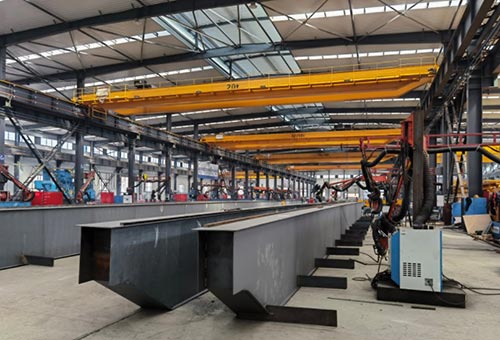


Understanding how double girder bridge crane accessories affect pricing can help customers make informed decisions about their purchase.
Double girder bridge cranes are essential lifting systems used in industries like manufacturing, construction, and warehousing. They are robust, durable, and capable of handling heavy loads. However, when purchasing a double girder bridge crane, many factors influence the overall cost. One of the key components that impacts the price is the range of accessories and additional features offered with the crane. Understanding how these accessories affect pricing can help customers make informed decisions about their purchase.
The type of control system is a significant factor that affects the price of a double girder bridge crane. Common control methods include:
Each control option has different pricing tiers, with remote and cabin controls costing more than pendant control due to their advanced features and higher installation complexity.
An anti-sway system is a valuable accessory for increasing the operational safety and precision of a bridge crane. It reduces the load swing, which is particularly beneficial when transporting heavy or fragile loads. The installation of an anti-sway system typically involves complex algorithms and sensors that detect and counterbalance the swinging motion.
While this feature enhances the performance and safety of the crane, it comes with a higher price tag due to the technology and engineering required to integrate it into the crane’s system. However, the long-term cost savings due to reduced load damage and faster cycle times can make it a worthwhile investment. To learn more about overhead crane prices, visit website https://aicraneliftingsolution.com/overhead-cranes/overhead-crane-price/
A variable frequency drive (VFD) controls the speed of the crane’s motor, allowing for smooth starts and stops. This reduces mechanical stress on the crane’s components and extends the equipment’s lifespan. Additionally, VFDs provide better load control, which improves operational efficiency.
The inclusion of VFDs increases the initial cost of a double girder bridge crane because they involve more sophisticated motor control technology. However, they contribute to cost savings in the long run through improved energy efficiency and reduced wear and tear.
The type of hoist and trolley used in a double girder bridge crane setup also affects the price. Common options include:
The design and capacity of the trolley that moves along the bridge girders also impact the price. A high-performance trolley with additional features like high-speed movement or precision positioning will drive up the cost but offer enhanced productivity.
A load weighing system is a valuable feature that provides accurate measurements of the load being lifted. This accessory is critical for ensuring that the crane is not overloaded, which can prevent accidents and equipment damage.
While load weighing systems enhance operational safety, they are an additional expense. The price varies depending on the complexity of the system and the type of data display, whether basic or integrated with a more advanced monitoring system.
Sometimes, specialized lifting attachments such as magnet lifters, vacuum lifters, or custom-designed hooks are required based on the type of load the crane will be handling. These attachments can be customized to specific shapes or materials, offering more functionality but at an additional cost.
Custom attachments typically raise the price due to the bespoke design and fabrication involved. However, they can significantly increase the efficiency and safety of handling unique or irregularly shaped loads.
By carefully considering which accessories to include, businesses can optimize their investment and ensure the crane delivers maximum value throughout its operational life.
